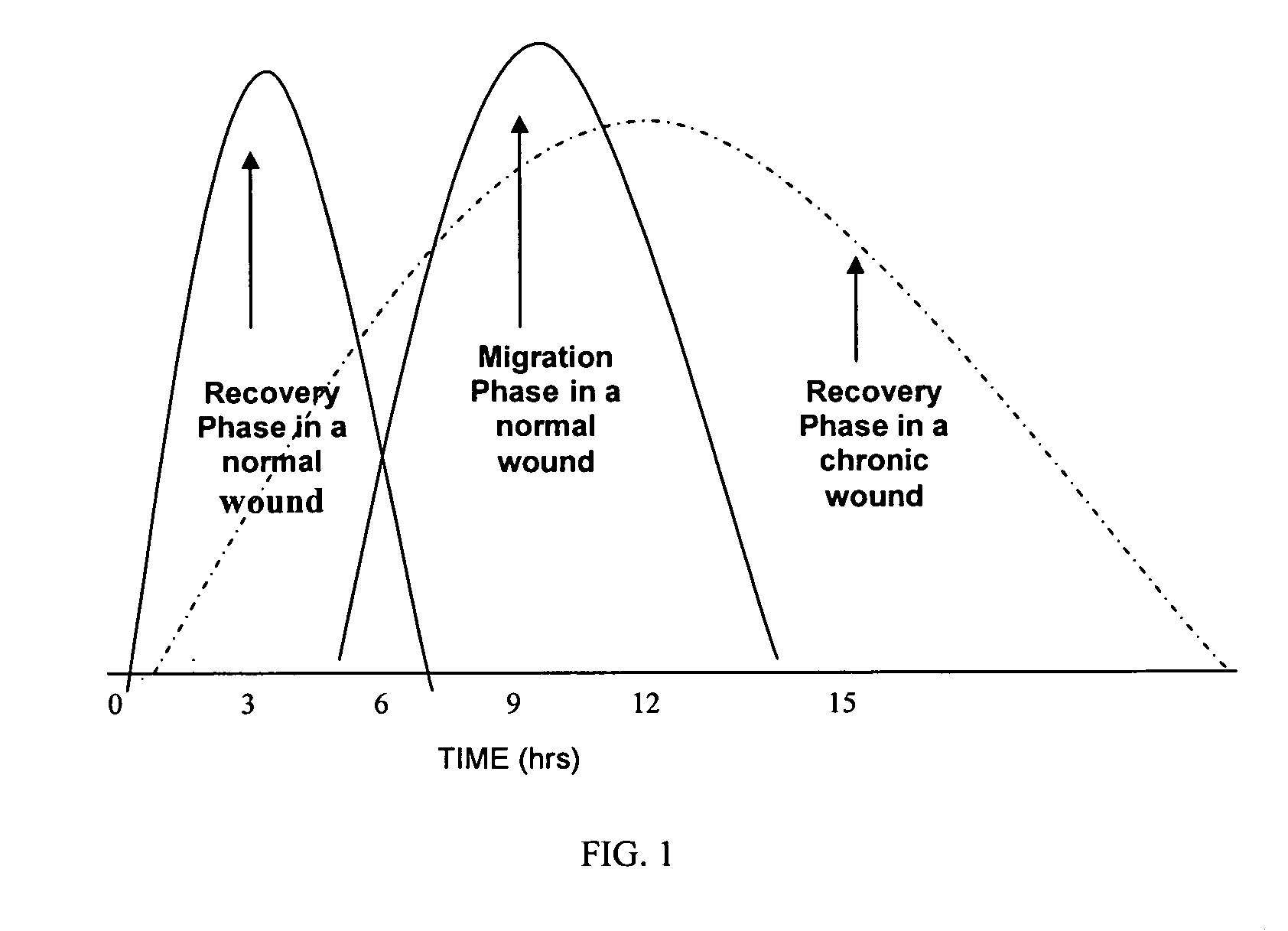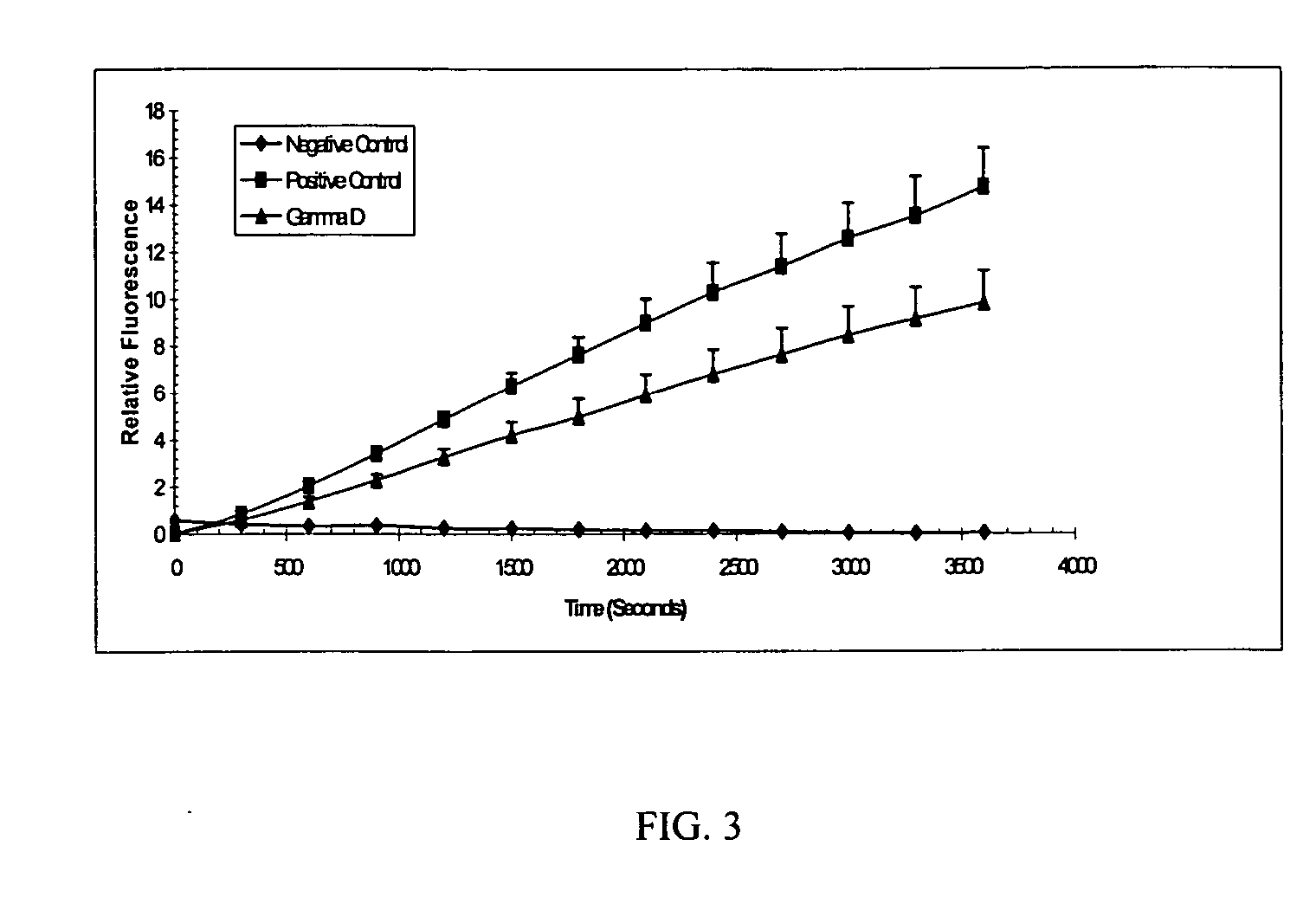Methods for increasing cell and tissue viability
- Summary
- Abstract
- Description
- Claims
- Application Information
AI Technical Summary
Benefits of technology
Problems solved by technology
Method used
Image
Examples
Example
EXAMPLE 1
Cloning, Over-Expression, and Purification of p26, α-A-crystallin, γ-D-crystallin, SicA and the Chimerical Protein, Pepstatin A / Leupeptin / Alpha(α-)A-crystallin
[0168] Oligonucleotide primers were designed to incorporate an NdeI restriction site at the 5′ end and an XbaI site at the 3′ end of the gene during the amplification of alpha(α-)A-crystallin, gamma (γ-)D-crystallin from human cDNA clones (ResGen Genestorm Clone, Invitrogen, Carlsbad, Calif.). To generate a robust protease inhibitor a recombinant chimeric protein of PepstatinA (aspartic protease inhibitor), Leupeptin (inhibitor of serine proteases and some cysteine protease) and alpha(α-)A-crystallin (elastase inhibitor) (Pep / Leu / α-A-crystallin) was constructed. The chimeric protein was designed so as to have a broad range of specificity for inhibiting proteases. This chimera was generated by a two-step cloning procedure of the open reading frames (ORFs) into the expression vector.
[0169] Cloning and expression of t...
Example
EXAMPLE 2
“Foldase” Assay
[0171] As described herein, protective proteins can function as general-purpose folders for any molecule that has formed unstable protein intermediates. A “foldase” assay to quantify the folding activities of these proteins has been developed. A labile, heat-sensitive enzyme is heated with the protective protein and activity is then measured and compared to a control.
[0172] Nde I is a restriction endonuclease which can linearize the plasmid vector pET28a (Novagen, San Diego, Calif.) by cleaving its unique Nde I site. After 60 minutes of pre-incubation at 40° C., the activity of Nde I is significantly diminished, and the enzyme can no longer filly cleave pET28a. Here it is demonstrated that p26 is capable of enhancing and prolonging the activity of Nde I under these conditions. Three reaction tubes were prepared as described in Table 1. TABLE 1Reaction #EnzymeProtein addedPretreatment1Nde I (20 units)None (buffer control)40° C. for 1 hour2Nde I (20 units)5...
Example
EXAMPLE 3
Protective Proteins Enhance Wound Healing
[0174] Wound healing is a multi-phase process involving two important and distinct activities: cell migration and cell recovery. Most of the effort in this field has been focused on the roles of growth factors (e.g., PDGF) and extracellular components (e.g., collagen) in cell migration. In contrast, the approach described herein focuses on proteins that actively promote cell viability by minimizing denaturation due to unfolding or other conformational changes in protein structure and / or due to enzymatic cleavage. Both mechanisms of denaturation are significant problems in chronic wounds.
[0175] Based on the understanding of the ability of the protective proteins to stabilize proteins in vitro, it is reasonable to believe that the protective proteins promote the healing of chronic wounds through the enhancement of cell viability. This was tested in an infected partial thickness porcine model of chronic wounds. The pig is a widely us...
PUM
| Property | Measurement | Unit |
|---|---|---|
| Pharmaceutically acceptable | aaaaa | aaaaa |
| Antimicrobial properties | aaaaa | aaaaa |
| Stability | aaaaa | aaaaa |
Abstract
Description
Claims
Application Information
 Login to view more
Login to view more - R&D Engineer
- R&D Manager
- IP Professional
- Industry Leading Data Capabilities
- Powerful AI technology
- Patent DNA Extraction
Browse by: Latest US Patents, China's latest patents, Technical Efficacy Thesaurus, Application Domain, Technology Topic.
© 2024 PatSnap. All rights reserved.Legal|Privacy policy|Modern Slavery Act Transparency Statement|Sitemap



